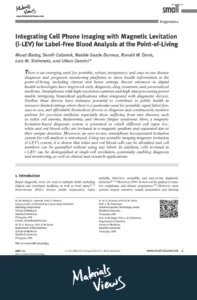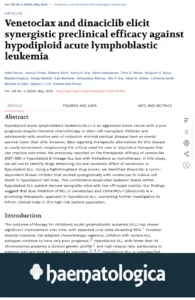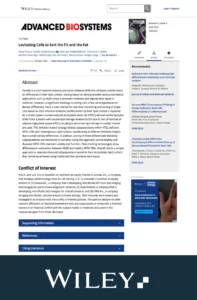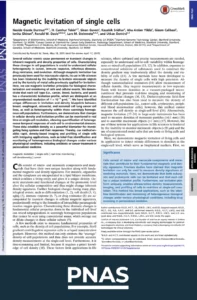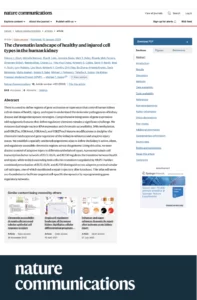Publication summary
In their pioneering study, Naside Gozde Durmus, PhD, and colleagues challenged the idea that magnetic levitation could only be effectively applied to nonliving materials, demonstrating the levitation of diverse cancer, blood, bacteria, and yeast cell types, each with distinct profiles. The ‘MagDense’ system employed two neodymium magnets flanking a microcapillary tube containing samples in a gadolinium-based paramagnetic medium. Within minutes, cells equilibrated to distinct levitation bands at various heights observable via high-resolution microscopy, offering real-time profiling of distinct subpopulations of cells undergoing different cellular processes. The platform discerned unique levitation profiles for breast, esophageal, colorectal, and non-small cell lung cancer cell lines and detected heterogeneity even within particular cell types with single-cell resolution. Cancer cells displayed distinct signatures from regular blood cells, highlighting potential applications in identifying rare circulating tumor cells to enhance cancer monitoring and treatment. The platform also tracked real-time levitation profile shifts of cells under environmental stress or drug exposure. MagDense thus offers a simple, label-free approach to analyzing diverse cell types under varying conditions.
Levitation Technology uses intrinsic cell properties for gentle viability enrichment
The MagDense platform demonstrated the utility of cellular density and magnetic susceptibility as a significant intrinsic biophysical marker for studying living systems, their variations, and perturbations. This approach has evolved into the core Levitation Technology™ found in the LeviCell® systems, which capitalizes on this principle to enhance sample quality through the separation of viable cells from dead cells and debris without the requirement of cell labeling. The LeviCell platforms stand out from traditional separation methods, offering a more efficient and gentle approach of viability enrichment that ensures the maintenance of native cell states for diverse downstream applications, including single-cell multi-omics analyses. Moreover, the LeviCell platforms boast a unique real-time visualization feature, allowing researchers to witness cells in levitation throughout the process. This capability enables sample quality assessment, observation of cell population heterogeneity or behavior, and the extraction of quantifiable metrics.



